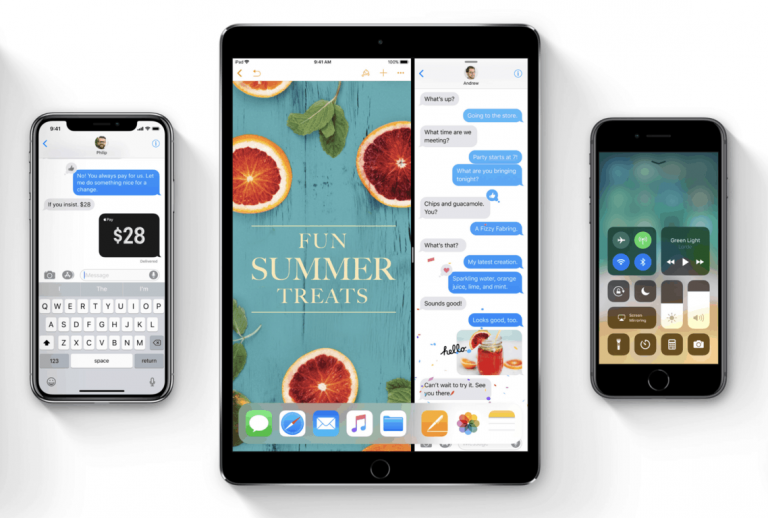Later today, iOS 11 will be available to download on select iPhones, iPods and iPads, followings months of testing and several beta releases. The latest version of Apple’s mobile OS brings several new features such as a new File manager that integrates third-party cloud storage services, a new picture format that takes less storage and more.
If it’s always tempting to install new major software updates on day one, though you may want to hold on if you use your iPhone with a Windows PC, or if you rely on Exchange Active Sync for your email inbox. Independent consultant Michael B. Smith highlighted the main issues you will encounter in those cases in a blog post yesterday.
First of all, after installing iOS 11 on an iPhone 7/7 Plus or the latest iPad Pros, these devices will now use the new HEIC image format by default (older iPhones and iPads running iOS 11 will be able to read this new format, but keep using JPEG when shooting new photos). Apple says that HEIC can let users save up to 50% on storage without any loss in image quality, but the new image format is not natively supported on Windows 10 or OneDrive. In other words, you won’t be able to open HEIC pictures with the Windows 10 photos app, and these images won’t be viewable on the OneDrive web and iOS apps either.
If this bothers you, you can turn off the new picture format on your iPhone or iPad by going to Settings > Camera > Formats and choose “Most Compatible” instead of “High Efficiency.” It’s not clear if Microsoft is already working to bring native HEIC support to Windows 10 and OneDrive, but we hope it’s in the pipeline.

Next, many users have been complaining about Exchange ActiveSync not working on iOS 11, especially when running Exchange Server 2016 on Windows Server 2016. “On a technical level, this happens because iOS 11 is improperly negotiating a HTTP/2 TLS connection and the connection fails,” explained Michael B. Smith in his blog post. “Microsoft has a fully supported workaround, which disables HTTP/2 TLS connections,” the consultant added, and you can learn more in this support article.
Last but not least, 32-bit–only apps are no longer supported in iOS 11, and that includes some old Microsoft iOS apps. The Redmond giant will also have to update all of its iOS apps with iOS 11 support over the coming weeks, and it already started last week with Microsoft To-Do.
https://twitter.com/itsmichaelwest/status/910148106175631366
Are you looking forward to update your iPhone or iPad to iOS 11 later today, or will any of the aforementioned issues prevent you from doing it immediately? Let us know in the comments below.
Update: If you use the OneDrive iOS app to back up your iPhone and iPad photos, the latest version automatically converts HEIC photos to JPEG before uploading them to the cloud, which will make sure that your pictures are viewable on any OneDrive client as well as the Windows 10 Photos app. If you want to turn off this feature for some reason, you can do by going to Settings -> Advanced and then switch off the “Upload Most Compatible” option.


